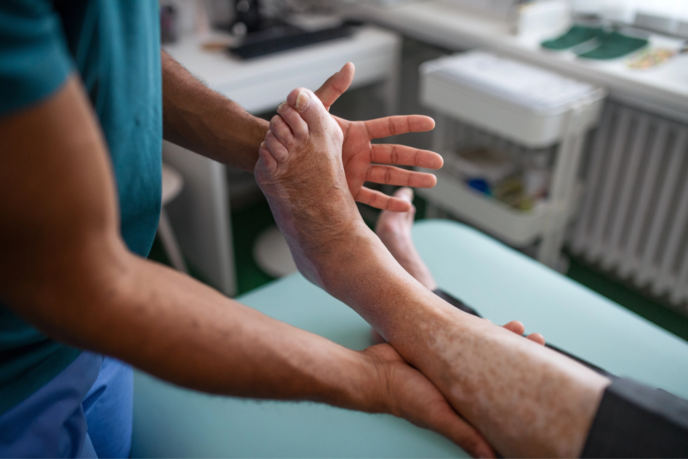
Dr Shams Amputation Prevention CLI Case
Dr. Joseph Shams leads the team’s compassionate, patient-centered approach to endovascular care to help you feel at home while you get back on your feet.
Patient History and Consultation
- 83-year-old female presents with gangrenous ulcerations of the right big toe, right plantar forefoot, and right heel. The patient had undergone revascularization at an outside institution 8 weeks ago with the progression of the ulcerations to gangrene. The patient also complains of severe rest pain of the toes bilaterally.
- Past Medical History
- HTN
- ESRD on HD
- Hypothyroidism
- Medications: clonidine, clopidogrel, ASA, nifedipine, hydralazine, labetolol, Velphoro, NTG
- The right foot is cold to touch. Skin is dry and scaly in appearance with ruborous toes. Dry gangrene of the big toe, plantar forefoot, and heel. Delayed capillary refill of the toes >1 sec, and absent hair distribution. No edema is identified. Left toes are also ruborous.
- Pulse exam: right femoral pulse 1+, left femoral pulse 1-2+, right dorsalis pedis artery pulse is nonpalpable with a non-dopplerable signal. The right posterior tibial pulse is nonpalpable with a weakly dopplerable monophasic signal. Left DP, PT non-palpable with weal dopplerable monophasic signals.
Patient Plan and Treatment
- Lab evaluation
- Arterial imaging/doppler
- Angiogram and planned revascularization via left femoral artery approach
Patient Follow-Up
- The patient experienced immediate increased sensation and warmth in the foot.
- She was kept on aspirin 81 mg and Xarelto 2.5 mg BID for 3 months.
- Gangrenous ulcerations completely healed over 2 months
- Left lower extremity intervention was performed at a later date.
Before and After Images
Pre Treatment Pictures
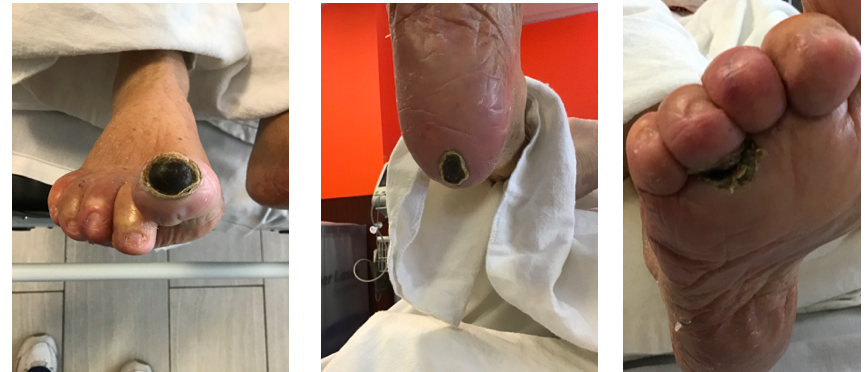
Aortogram/pelvic angiogram demonstrates high-grade, mid-left external iliac artery stenosis
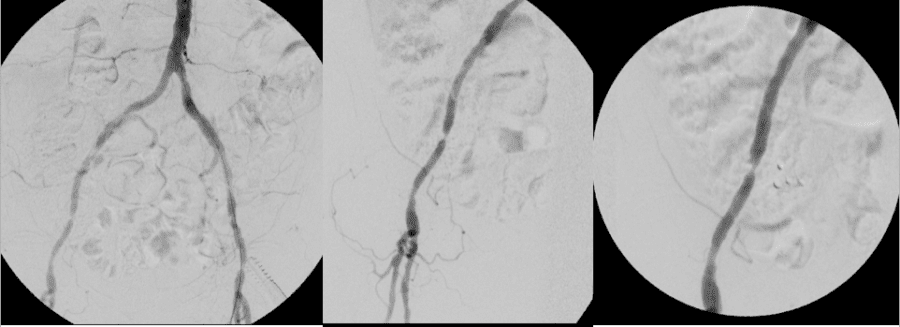
Right Lower Extremity Angiogram
Scout Imaging demonstrates overlapping metallic stents extending from the mid-SFA through the mid popliteal artery. In addition, a drug-eluting stent is identified within the tibioperoneal trunk.
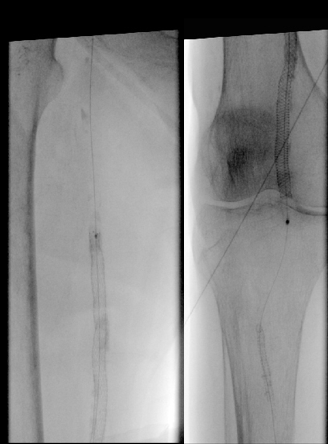
Right Lower Extremity Angiogram
Right lower extremity angiogram demonstrates severe proximal SFA stenosis as well as mid and distal popliteal artery stenoses within and beyond overlapping stents. Occlusion of the TP trunk beyond the stent is noted.
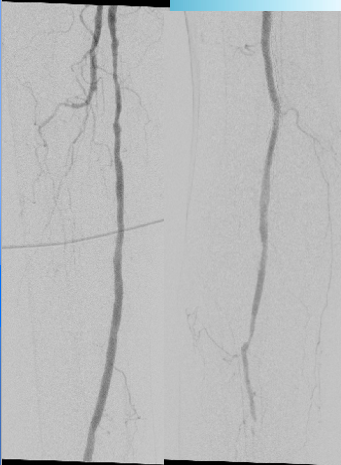
Right Lower Extremity Angiogram
Distal runoff is via collaterals in the calf. The posterior tibial artery is reconstituted above the ankle and supplies the lateral plantar artery within the foot.

Intervention
A 7 mm X 4 cm SMART non-covered stent was deployed across the stenosis and dilated with a 6 mm X 4 cm Gladiator balloon.

The PT occlusion was crossed with a 0.014 in. Command guidewire.
IVUS exam performed with a 0.014 in. Volcano IVUS demonstrating no thrombus within the stents or run-off vessels.
Laser atherectomy of the SFA, popliteal, and PT lesions was performed with a 1.4 mm SPECTRANETICS laser.
Supplemental PTA of the SFA and popliteal artery stenoses was performed using a 5 mm Saber balloon.
Supplemental PTA of the TP trunk and PT stenoses was performed using 2.5 mm and 3 mm Saber balloons.

Before and After Images
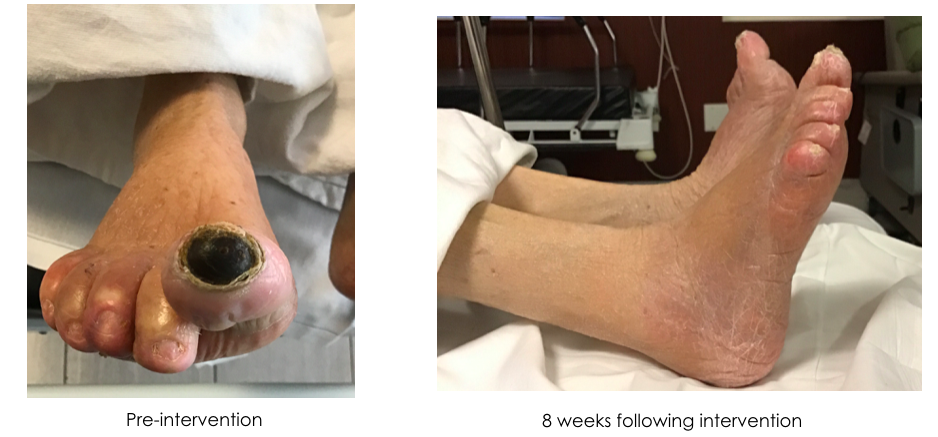
Discussion
- Always check femoral pulses prior to intervention; if asymmetry is identified suspect iliac artery lesion even if ultrasound exam equivocal.
- Attempt to reestablish straight-line flow to the area of the wound to optimize the healing potential.
- IVUS exam is very helpful in characterizing lesions, determining if the thrombus is present and sizing vessels for treatment.
- Aggressive intervention can result in complete healing in some advanced cases.
Related Blogs & Videos
Learn more about vascular health, prevention, and care for Peripheral Artery Disease.

